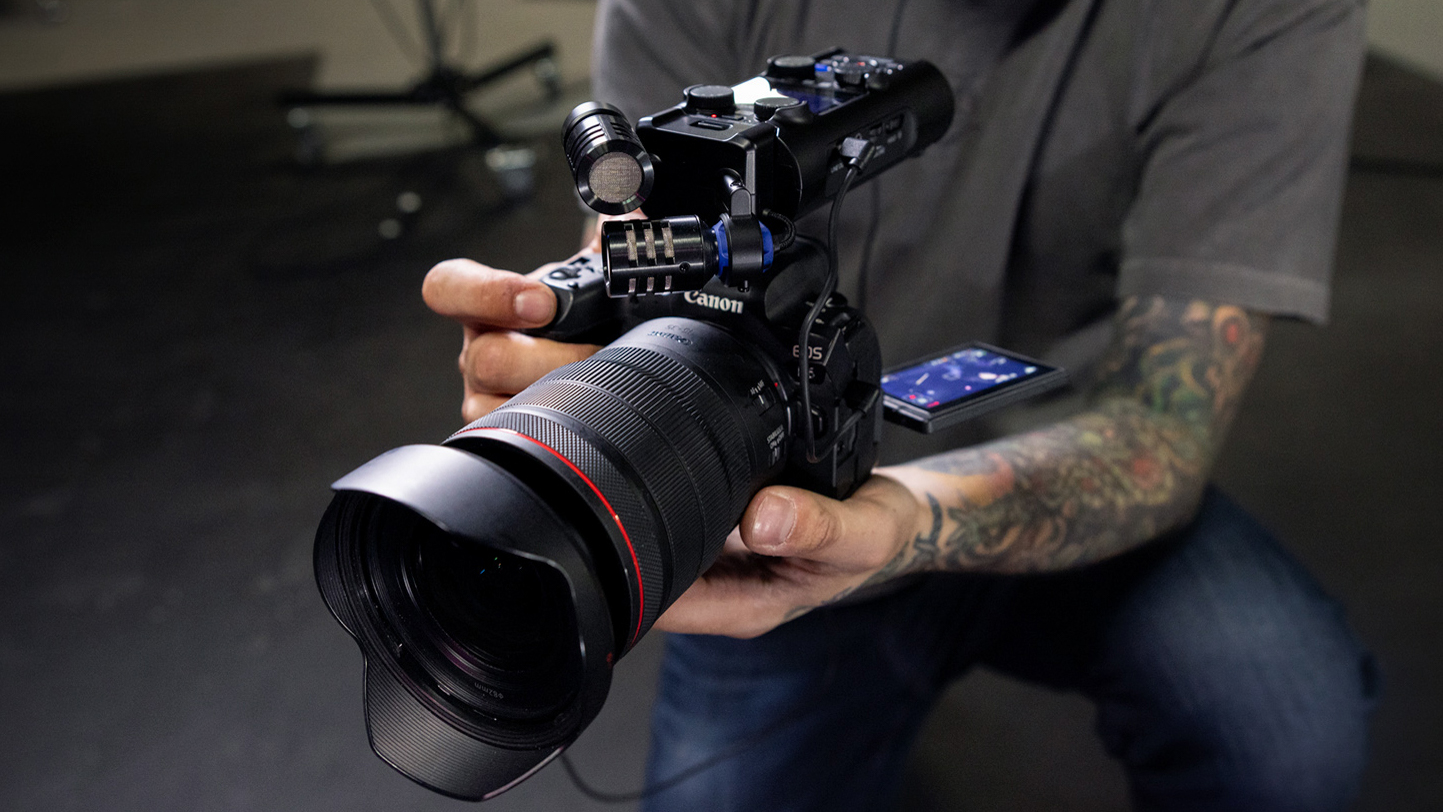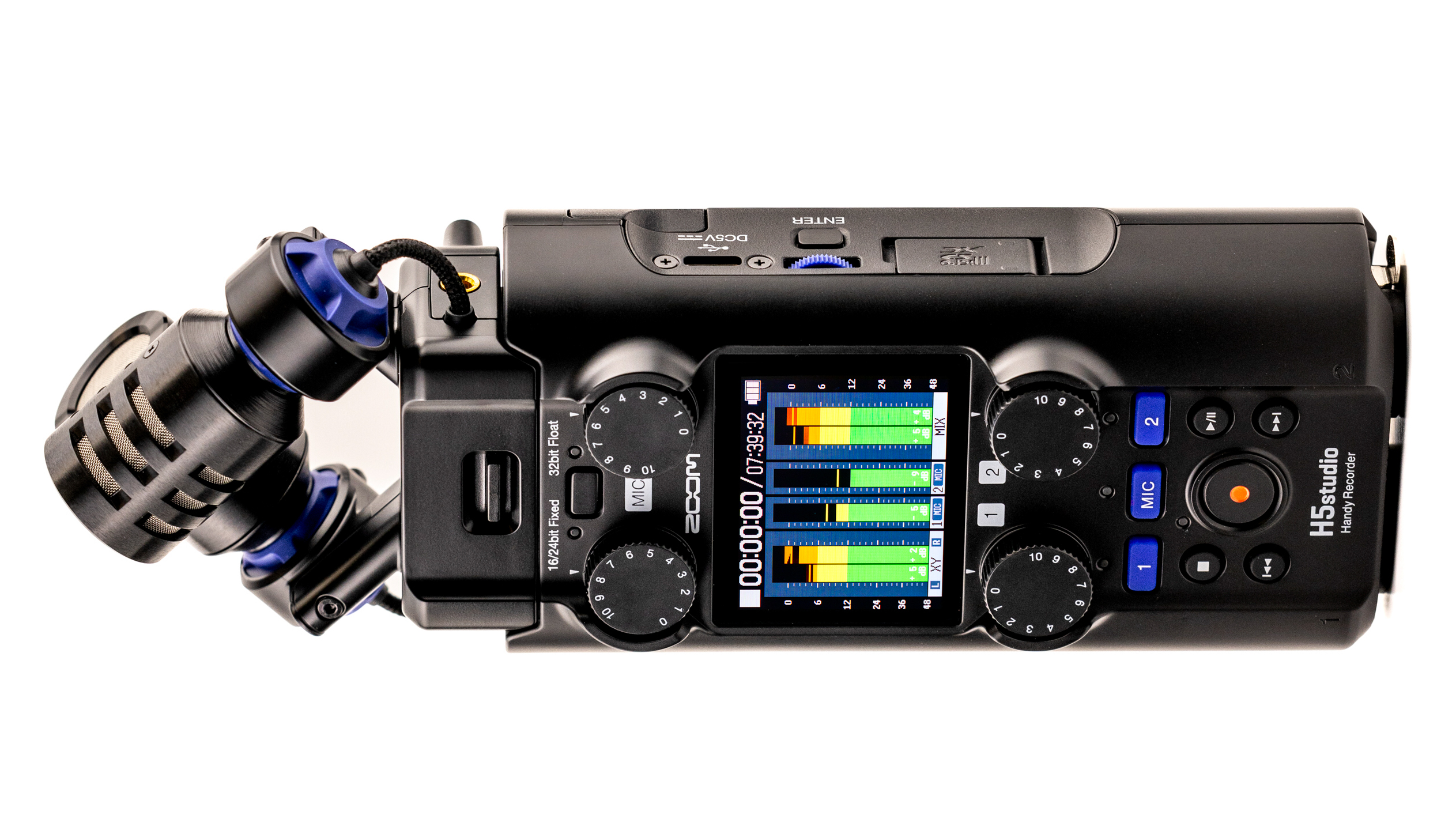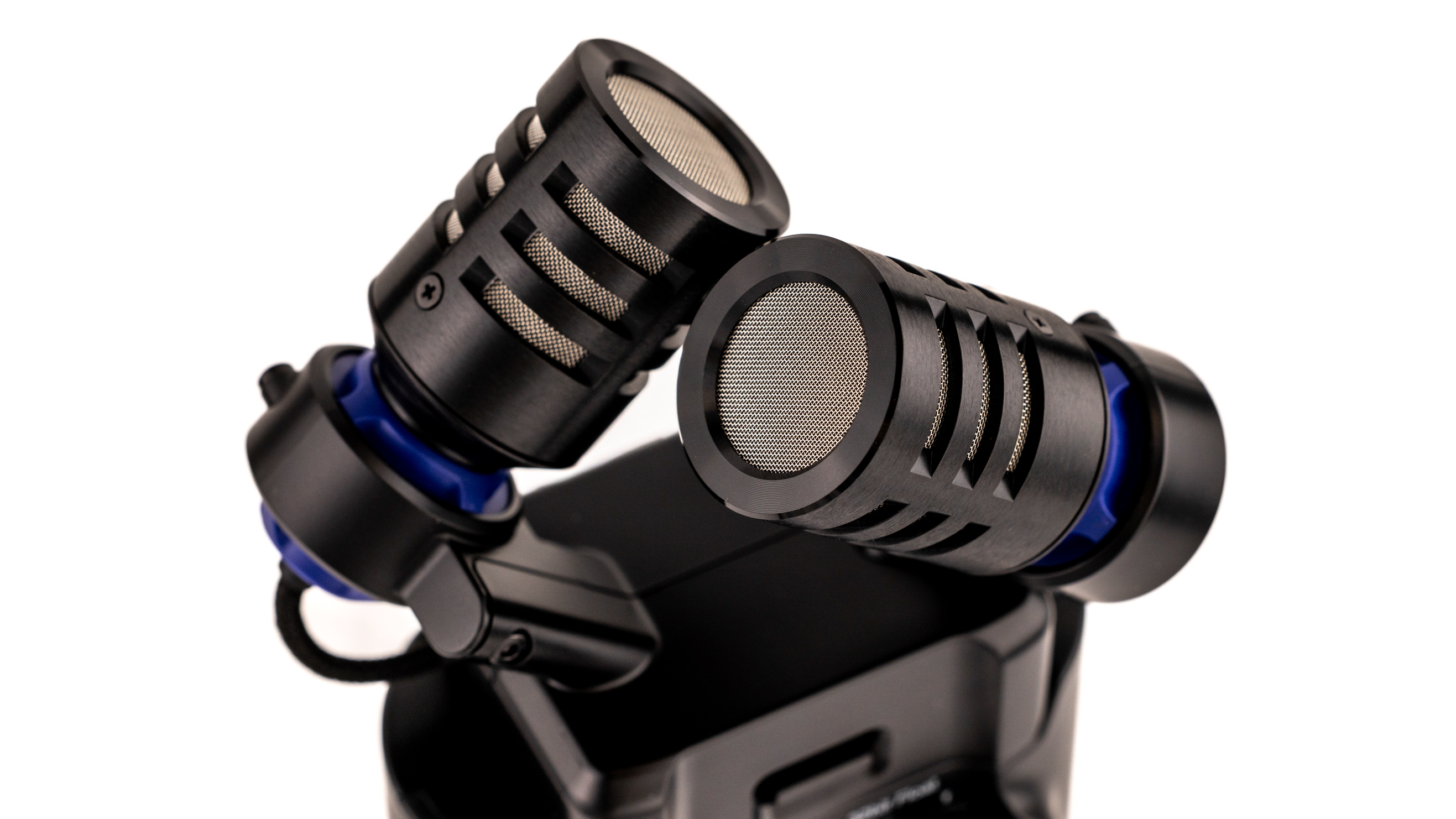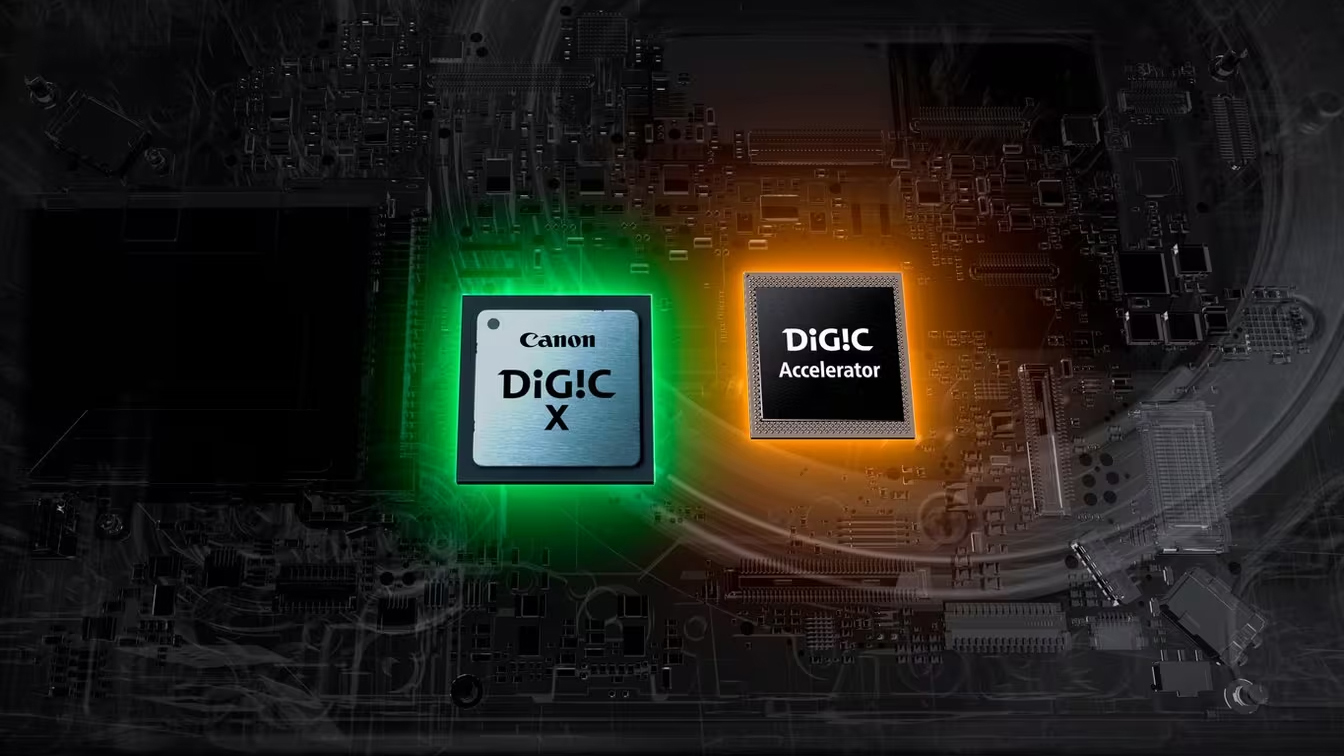Zoom H5Studio - a full-feature update to the classic portable audio recorder
Portable audio recording specialist Zoom has packed all its expertise and the latest digital audio technologies into the much-updated version of its popular H5 modular field recorder
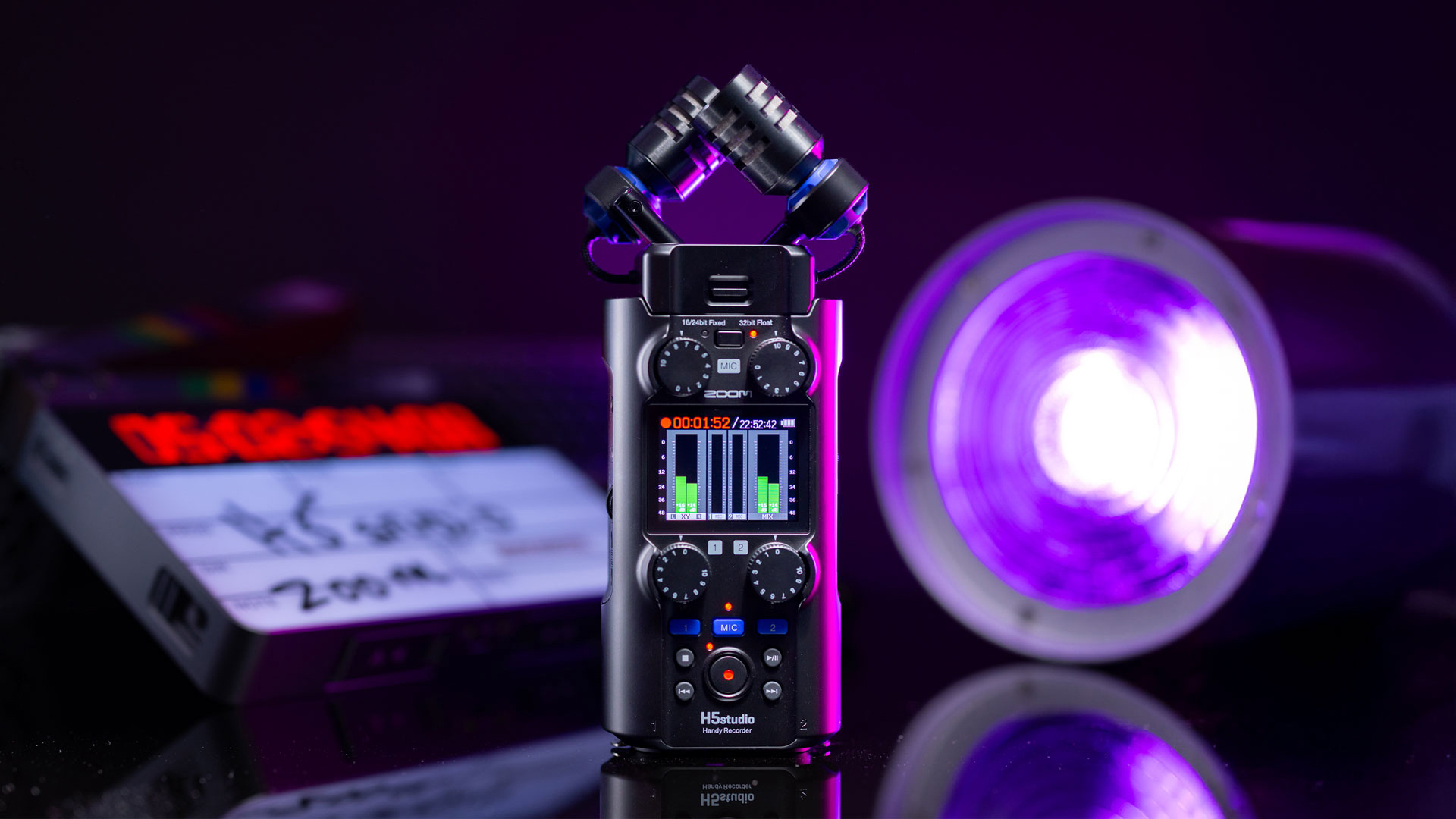
The more you delve into video making with a mirrorless camera or a DSLR, the more you’ll find out about the limitations of their audio capabilities… and the more you’ll come to realise just how important is the sound side of any production.
An external microphone is the least that you can do to improve audio quality, but an external audio recorder takes things a lot further, and the brand that’s made its name in portable digital audio equipment is Zoom. Introduced back in 2014, the original Zoom H5 digital audio recorder was one of the first models with interchangeable microphone modules which made it exceptionally versatile. Consequently, it has become a staple for many sound recording applications including podcasts, interviews, dialogue audio and in-the-field work. The H5studio version incorporates additional features and new audio recording technologies to make it even more of an all-rounder as well as enhancing performance.
It’s still a very compact and lightweight unit that’s comfortably hand-held, and can also be easily mounted on a camera – but it now has the largest microphones ever fitted to a Handy series model – with 19.4 millimetres diameter diaphragms –which have a wider frequency response, a maximum SPL (sound pressure level) of 140 dB, and an expanded dynamic range of 132 dB.
As before, the H5studio allows for the microphone modules to be interchanged so the standard X/Y capsule – which is supplied with the unit – can be easily swapped for pick-ups that are better suited to specific applications.
However, the H5studio is still compatible with existing optional modules such as mid-side shotgun-type microphone and an XLR/TRS input unit, along with a new dual-channel wireless module which drives a pair of lavalier lapel mics (for interview set-ups) and is also a System 3.0 component which supports 32-bit ‘float’ audio recording. This is a technology that’s designed to eliminate clipped and distorted audio which happens when there are sudden increases (or reductions) in the sound levels… often an issue when recording on location. It also eliminates the need to continually adjust the recording levels manually to correct for changes in the sound level.
However, the H5studio also supports the 16- and 24-bit formats which don’t need any post-production processing, but do require gain adjustments when recording. Take your pick, and two sets of dedicated gain knobs are provided. For video-makers, there’s the provision for connecting optional TCA-1 or BTA-1 timecode adapters, but the H5studio also supports wireless timecode from the Atomos UltraSync BLUE module.
There’s a host of physical connections with the audio inputs including a pair of XLR/TRS which both support 48V phantom power and use Zoom’s F-series preamps with dual AD converters to support the 32-bit float recording, and deliver the wide 132 dB dynamic range. There’s also what Zoom calls “advanced look-ahead” limiters which anticipate potential overloads and so prevent distortion.
The best camera deals, reviews, product advice, and unmissable photography news, direct to your inbox!
The H5studio can record up to six tracks (i.e. the stereo mics and audio four inputs) with sample rates of up to 192 kHz. It’s also a 4-in/2-out USB audio interface for Mac, Windows, iOS, and Android, supporting 32-bit float and 16/24-bit recording. So, for example, it’s possible to live stream and also simultaneously record a back-up to an onboard microSD memory card.
Furthermore, with either the TCA-1 or BTA-1 timecode adapters connected, the Zoom Handy Control & Sync app for iOS can be used remotely control start/stop recording and synchronise timecodes. The H5studio accepts microSDXC memory cards and now up to 2.0 TB in capacity and, usefully, has a 30-second automatic recording back-up system.
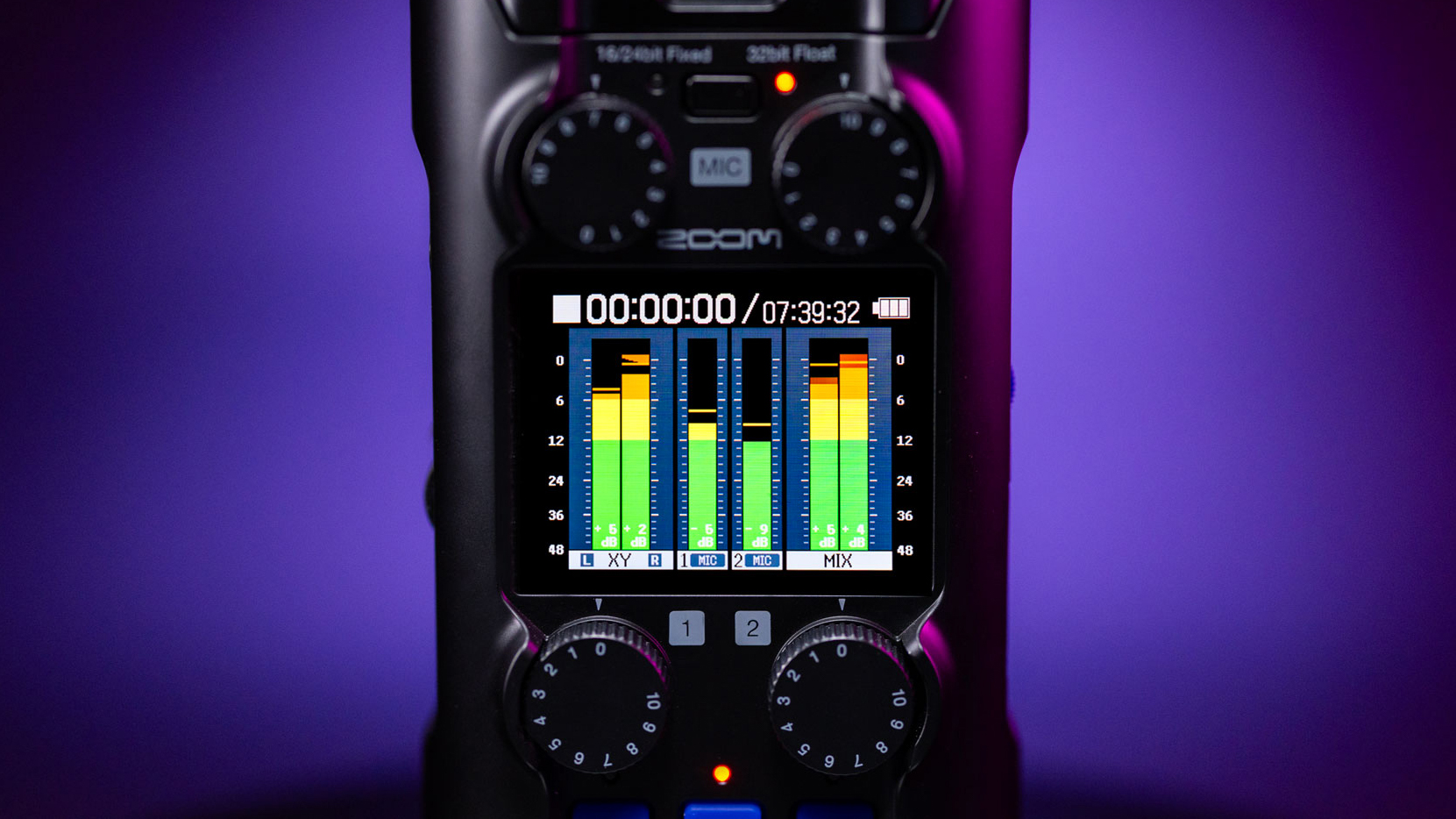
Other notable features include a 5.0 cm full color LCD display (which shows input levels via real-time waveforms), a built-in loudspeaker, headphone and line-level outputs (the latter for direct connection to a camera to sync video and audio), and a mono mode (for recording narration, vocals or interviews). However, it’s not a touch screen so menu navigation is still the old-school way.
Onboard power now comes from four AA-size batteries which Zoom says are good for around 15 hours of operation, but the unit’s USB-C connection supports external power delivery. With batteries installed, the H5studio still only weighs a modest 410 grams.
In the field, the H5studio is very easy to set up with nicely tactile controls – notably the gain knobs – and the comprehensive colour display which tells you everything you need to know at a glance.
Zoom has actually made the H5studio more purely a recording tool – the previous model, for example, had some basic audio editing functions – and this actually streamlines its usability and its operational efficiency.
Perhaps not surprisingly given the word ‘studio’ is in the model name, the sound is indeed studio quality with very clean highs, a well-defined mid-range and a rich, solid bass. The stereo imaging with the standard mic capsule is both wide and very convincing, and handling noise seems well suppressed, provided you don’t keep changing your grip while using it handheld.
With the H5studio mounted on a camera – there’s a standard ¼-inch tripod screw socket on the back of the unit as the starting point – you still need to take care with handling and using any physical controls because it is quite sensitive to bumps and knocks.
Obviously there’s plenty of flexibility when it comes to how you record your video soundtracks – line-level to the camera (which will still be better than using the camera’s mics), direct to the H5studio’s memory card or to an external recorder – so it will just depend on how much you want to do in postproduction and, of course, how far you want to chase the best possible sound quality. However, in any set-up or situation, the H5studio delivers a command performance.
Check out our full guide to the best audio recorders for filmmaking

Paul has been writing about cameras, photography and photographers for 40 years. He joined Australian Camera as an editorial assistant in 1982, subsequently becoming the magazine’s technical editor, and has been editor since 1998. He is also the editor of sister publication ProPhoto, a position he has held since 1989. In 2011, Paul was made an Honorary Fellow of the Institute Of Australian Photography (AIPP) in recognition of his long-term contribution to the Australian photo industry. Outside of his magazine work, he is the editor of the Contemporary Photographers: Australia series of monographs which document the lives of Australia’s most important photographers.
You must confirm your public display name before commenting
Please logout and then login again, you will then be prompted to enter your display name.
